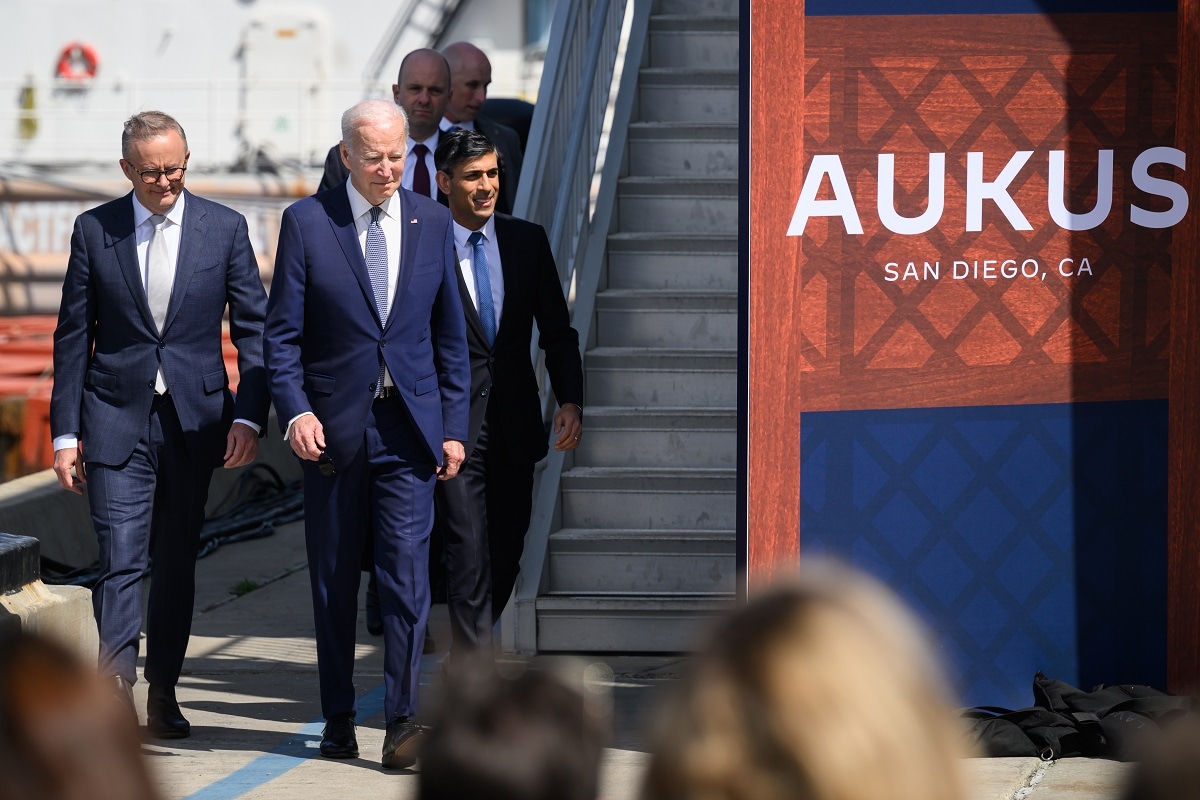Since terminating its formal alliance with Taiwan in 1979, the United States has adhered to a policy known as “strategic ambiguity”. The Taiwan Relations Act, which Congress passed in that same year, declares that the United States will “consider any effort to determine the future of Taiwan by other than peaceful means [...] of grave concern”. This language largely mirrors that of the formal alliance treaties the United States has with its East Asian allies, such as Japan and South Korea, but creates ambiguity by falling short of an explicit defence commitment. In order to communicate to China that the United States might defend the self-governing island, US presidents and officials have routinely referred to the US Taiwan policy as being rooted in the Taiwan Relations Act and made general references to a US interest in peace and stability across the Taiwan Strait.
Under the Biden administration, a new US strategy that could be termed “collective strategic ambiguity” has emerged. China’s rapid military modernisation and increasing intimidation of Taiwan, as well as Chinese leader Xi Jinping’s declarations of a seeming timeline for unification, have driven growing concern that deterrence is eroding across the Strait. Part of the US response to try and bolster deterrence has involved signalling to China that there might be a combined allied effort to defend Taiwan. Since 2021, the United States has released a number of joint statements with its allies that include a line in the vein of “we emphasise/underscore the importance of preserving peace and stability in/across the Taiwan Strait”. In June 2021, Kurt Campbell, the White House Coordinator for the Indo-Pacific, clarified the Biden administration’s objective with these joint statements. Discussing the references to Taiwan in the US–Japan and US–South Korea joint statements issued earlier that year, he declared that “we are seeking to take these concerted actions to send a clear message of resolve that we are determined to maintain that peace and stability” across the Taiwan Strait.

These joint statements resulted from various types of diplomatic engagements at different levels of seniority, including bilateral leadership-level summits, bilateral 2+2 ministerial dialogues, trilateral ministerial meetings, and a G7 summit. Notably, some of these joint statements mentioned Taiwan for the first time ever or in decades. For instance, in April 2021, when Japan's then prime minister Suga Yoshihide made an official visit to Washington, the leaders released a joint statement that referenced their shared interest in the “importance of peace and stability across the Taiwan Strait”, marking the first time since 1969 that Taiwan was mentioned in a joint statement by the two countries. In June of that same year, the G7 (which includes six NATO members and Japan) published a joint statement in which they referenced Taiwan for the very first time, declaring that they “underscore the importance of peace and stability across the Taiwan Strait”. More recently, when Philippine President Ferdinand R. Marcos Jr made an official visit to Washington in May, a US–Philippines joint statement declared that “they affirm the importance of maintaining peace and stability across the Taiwan Strait”. President Biden has communicated a message of confidence that the United States and its allies are united in their willingness to defend the status quo, declaring in May this year that “there is clear understanding among most of our allies that, in fact, if China were to act unilaterally, there would be a response”.
Accompanying these declarations, US allies have sought to bolster their military capabilities in ways that could potentially improve their ability to protect Taiwan. US defence cooperation is essential to these efforts. For instance, through the AUKUS partnership between Australia, the United Kingdom and the United States that was formed in 2021, the United States will share its nuclear propulsion technology to help Australia acquire nuclear-powered attack submarines. This will enable Australia to operate in the waters around Taiwan and conduct operations such as anti-submarine warfare against China’s subsurface fleet. Similarly, Japan announced plans this year to acquire counterstrike capabilities, which will include purchasing 400 Tomahawk cruise missiles from the United States. These would allow Japan to target China’s missile launchers and command-and-control sites that would be key to an invasion of Taiwan.
Yet, despite these joint statements and military investments, there is uncertainty over not just the kind of support allies would provide, but over whether they would provide any at all. Consequently, these messages may not significantly alter China’s calculus. Regarding potential support from European allies, for example, analysts are sceptical as to whether they could and would make consequential military contributions. There is even uncertainty as to whether US allies in the Indo-Pacific would provide any substantial military support. A recent report by the RAND Corporation assessed that just two US allies in the Indo-Pacific – Australia and Japan – could be expected to help the United States. Moreover, this would likely just lie in the realm of “limited support”. As such, allied assistance may consist of little more than a sanctions regime similar to that which the United States and its allies imposed on Russia for its invasion of Ukraine.
Biden has stated without ambiguity on four occasions that the United States would defend Taiwan if it were attacked. On top of this, the United States has worked with its allies to communicate to China that there could be a collective effort by US allies to defend the status quo across the Taiwan Strait. However, whether China will be deterred by these signals, or whether US allies will actually step in and help the United States defend Taiwan, remains to be seen.

